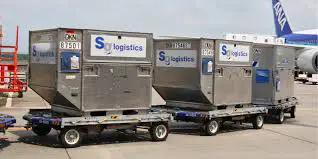Physical distribution is responsible for delivering to the customer what is wanted on time and at minimum cost. The objective of distribution management is to design and operate a distribution system that attains the required level of customer service and does so at the least cost. To reach this objective, all activities involved in the movement and storage of goods must be organized into an integrated system (physically).
Activities in the physical distribution system
A system is a set of components or activities that interact with each other. For example, A car engine is a system; if any part malfunctions, the performance of the whole engine suffers.
In a distribution system, six interrelated activities affect customer service and the cost of providing it:
1. Transportation
Transportation involves the various methods of moving goods outside the firms’ buildings. For most firms, transportation is the single highest cost in distribution usually accounting for 30% to 60% of distribution costs. Eventually transportation adds place value to the product.
2. Distribution inventory
Distribution inventory includes all finished goods at any point in the distribution system. In cost terms, it is the second most important item in distribution, accounting for about 25% to 30% of the distribution cost.
So far, Inventories create time value by placing the product cost to the customer.
3. Warehouse (distribution centers)
Warehouses are used to store inventory. The management of warehouses makes decisions on site selection; number of distribution centers in the system; layout; and methods of receiving, storing, and retrieving goods.
4. Materials handling
Materials handling is the movement and storage of goods inside the distribution center. The type of materials handling equipment used affects the efficiency and cost of operating the distribution center.
Furthermore, Materials handling represents a capital cost, and a trade-off exists between this capital cost and the operating costs of the distribution center.
5. Protective packaging
Goods moving in a distribution system must be contained, protected, and identified. In addition, goods are moved and stored in packages and must fit into the dimensions of the storage spaces and the transportation vehicles.
6. Order processing and communication
Order processing includes all activities needed to fill customer orders. It processing represents a time element in delivery and is an important part of customer service. Many intermediaries are involved in the movement of goods and good communication is essential to a successful physical distribution system.






